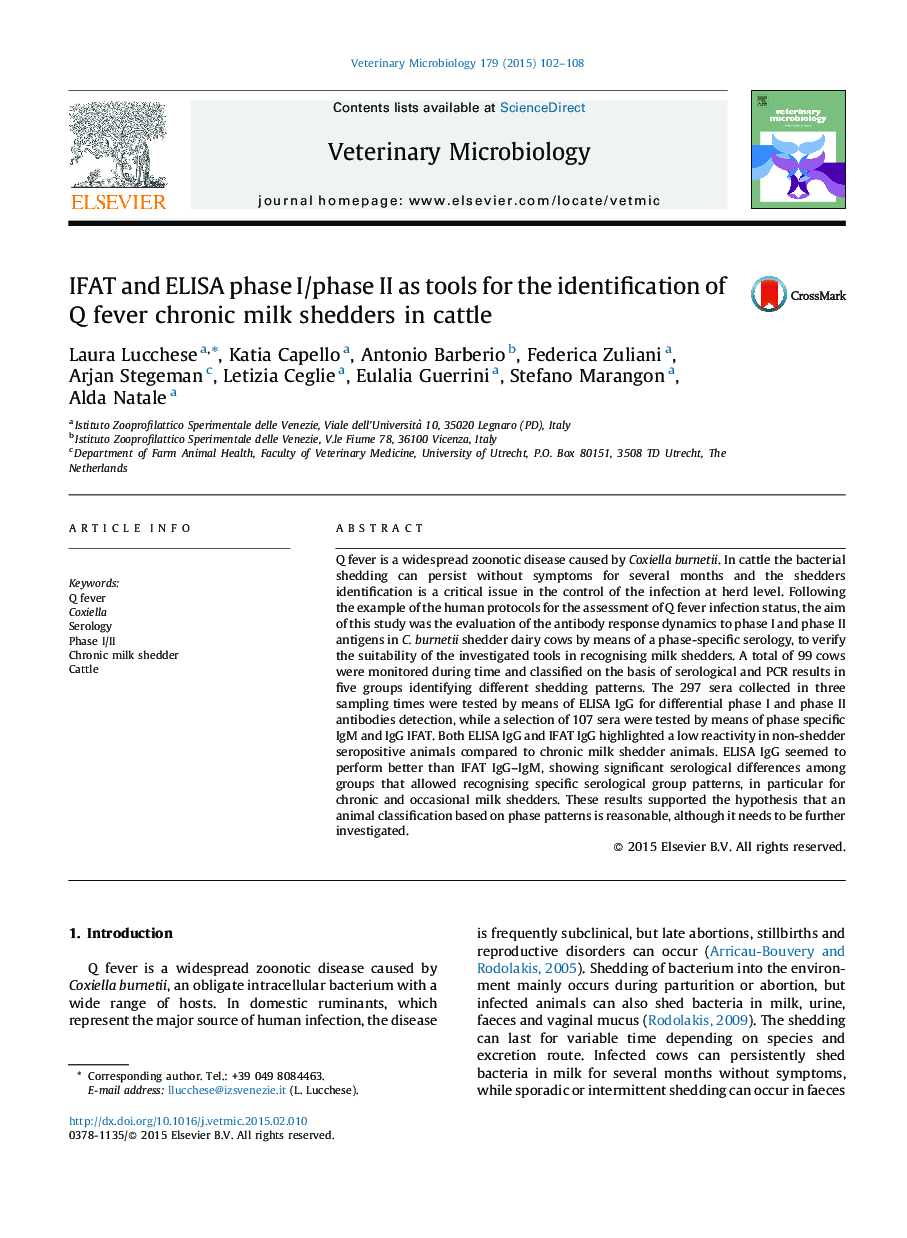| کد مقاله | کد نشریه | سال انتشار | مقاله انگلیسی | نسخه تمام متن |
|---|---|---|---|---|
| 5799979 | 1555347 | 2015 | 7 صفحه PDF | دانلود رایگان |

- Shedders identification as a critical issue in the control of Q fever in cattle.
- ELISA and IFAT phase I-II as possible tools for identifying chronic milk shedders.
- Classification of five cow groups based on shedding pattern and serological response.
- Evaluation of phase I-II antibody response dynamics in C. burnetii milk shedders.
- Recognisable phase I-II patterns for chronic milk shedders, especially for ELISA.
Q fever is a widespread zoonotic disease caused by Coxiella burnetii. In cattle the bacterial shedding can persist without symptoms for several months and the shedders identification is a critical issue in the control of the infection at herd level. Following the example of the human protocols for the assessment of Q fever infection status, the aim of this study was the evaluation of the antibody response dynamics to phase I and phase II antigens in C. burnetii shedder dairy cows by means of a phase-specific serology, to verify the suitability of the investigated tools in recognising milk shedders. A total of 99 cows were monitored during time and classified on the basis of serological and PCR results in five groups identifying different shedding patterns. The 297 sera collected in three sampling times were tested by means of ELISA IgG for differential phase I and phase II antibodies detection, while a selection of 107 sera were tested by means of phase specific IgM and IgG IFAT. Both ELISA IgG and IFAT IgG highlighted a low reactivity in non-shedder seropositive animals compared to chronic milk shedder animals. ELISA IgG seemed to perform better than IFAT IgG-IgM, showing significant serological differences among groups that allowed recognising specific serological group patterns, in particular for chronic and occasional milk shedders. These results supported the hypothesis that an animal classification based on phase patterns is reasonable, although it needs to be further investigated.
Journal: Veterinary Microbiology - Volume 179, Issues 1â2, 31 August 2015, Pages 102-108